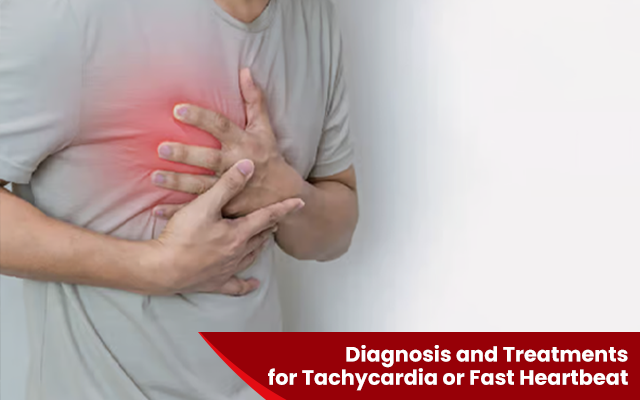Diagnosis and Treatments for Tachycardia or Fast Heartbeat
Tachycardia, or a fast heartbeat, occurs when the heart rate exceeds 100 beats per minute in adults. While an increased heart rate is natural during exercise or stress, a persistently irregular or rapid heartbeat may indicate an underlying medical condition. Understanding the diagnosis and treatment options for tachycardia is crucial for effective management and improved heart health.
Diagnosis of Tachycardia or Fast Heartbeat
A cardiologist will first assess the patient’s detailed medical history and may recommend various diagnostic tests to determine the cause of tachycardia. These tests include:
Electrocardiogram (ECG)
An electrocardiogram is a primary diagnostic tool for tachycardia. It records the heart’s electrical activity, helping to identify the origin of arrhythmia and irregular heart rhythms.
Echocardiogram
An echocardiogram uses ultrasound technology to provide detailed images of the heart’s structure and function. This test helps detect underlying issues such as heart disease, valve problems, or fluid accumulation around the heart.
Holter Monitoring
For persistent tachycardia, a 24- to 48-hour Holter monitor is used to track heart activity during daily activities. This continuous monitoring helps identify patterns and potential triggers.
Stress Test
A stress test evaluates how the heart functions during physical exertion. By monitoring the heart while the patient exercises, doctors can determine if activity-induced arrhythmias are present.
Treatments for Tachycardia
Several treatment options are available depending on the severity and cause of tachycardia.
Lifestyle Changes
If tachycardia is triggered by stress, caffeine, alcohol, or certain medications, adopting a healthier lifestyle can help manage the condition. Relaxation techniques, avoiding stimulants, and maintaining a balanced diet can reduce episodes and promote overall heart health.
Medications
Certain medications can help regulate heart rate and rhythm, including:
-
Calcium-channel blockers and beta-blockers: These slow down the heart rate.
-
Blood thinners: These reduce the risk of stroke in patients with arrhythmia.
-
Antiarrhythmic drugs: These help restore and maintain normal heart rhythm.
Catheter Ablation
For recurrent tachycardia, catheter ablation may be recommended. This minimally invasive procedure involves inserting a catheter through the blood vessels to the heart, where it destroys the abnormal tissue responsible for arrhythmia.
Surgery
If other treatments prove ineffective, surgical interventions may be necessary. Surgery may involve repairing damaged heart vessels or removing abnormal heart tissue to restore normal heart function.
Conclusion
With timely diagnosis and appropriate treatment, many cases of tachycardia can be effectively managed. If you are experiencing symptoms of a fast or irregular heartbeat, it is essential to seek expert medical advice. Consult the best heart specialists in Mukundapur at the Long Life Speciality Clinic for comprehensive evaluation and tailored treatment options to ensure optimal heart health.

